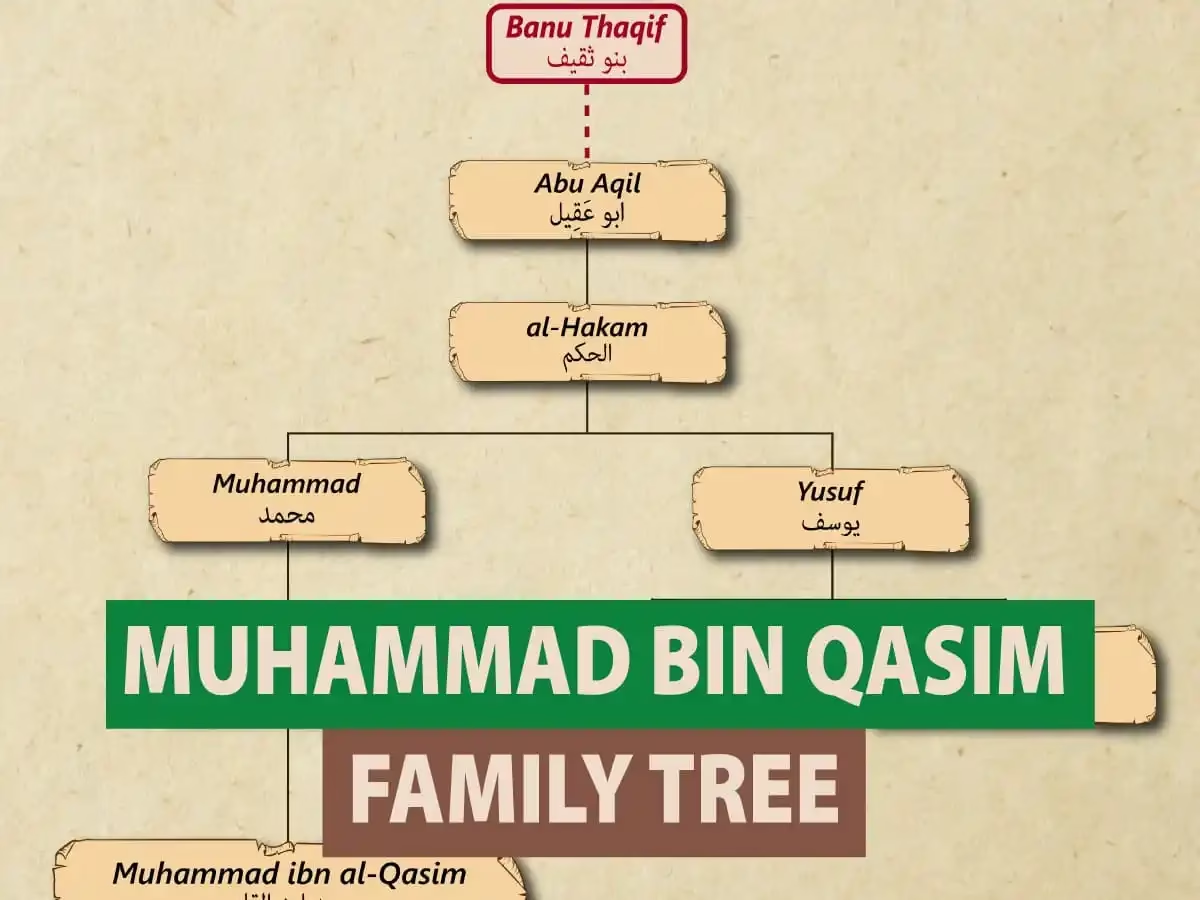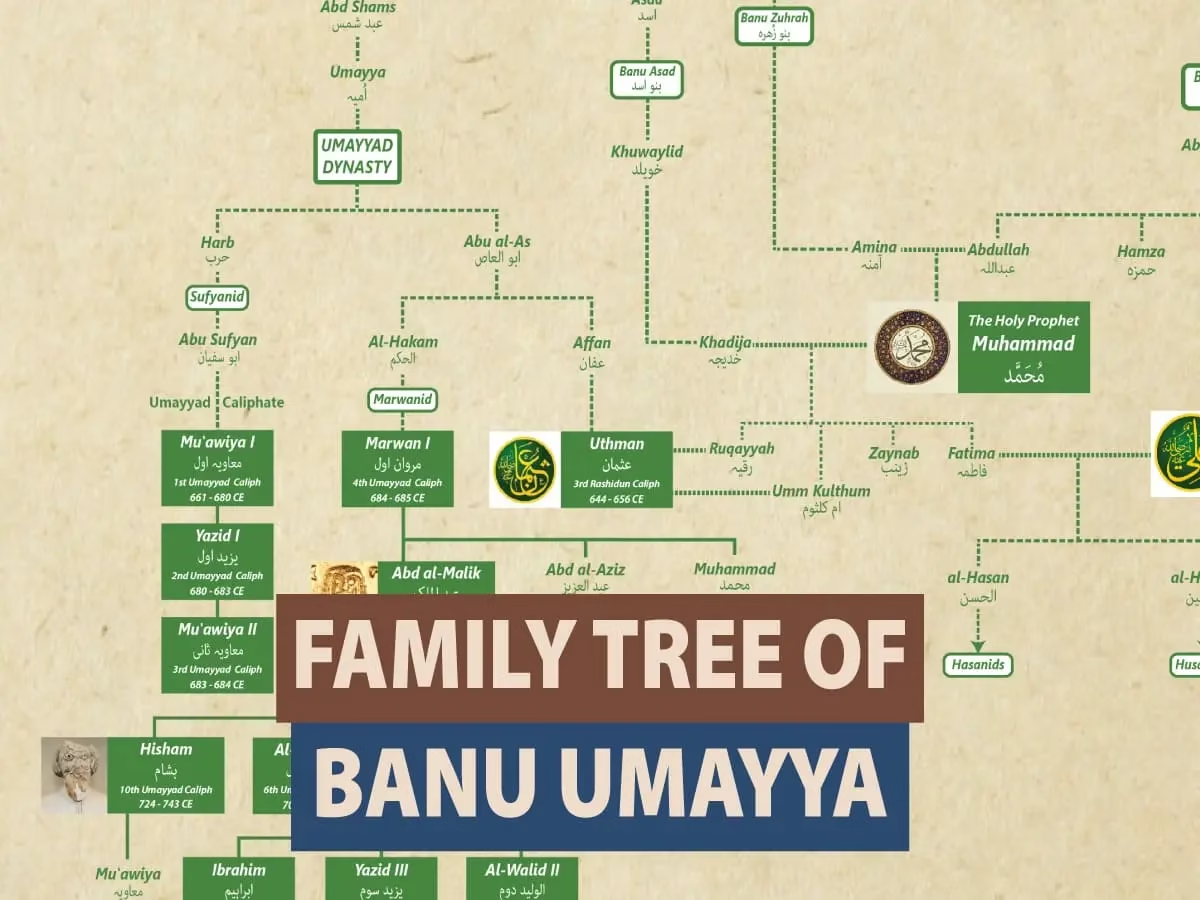The Family Tree of Seljuks in English and Urdu showcases the Early Seljuks leader, Seljuk Dynasty founded by Seljuq Bey, emerged from the Oghuz Turks and flourished under his descendants. Mikail ibn Seljuq’s sons, Tughril Beg and Chaghri Beg, established the Great Seljuk Empire, with Tughril securing Baghdad and Chaghri expanding through military and administrative efforts.
Arslan Yabgu and Musa Yabgu also played key roles, though Arslan’s imprisonment by the Ghaznavids limited his political impact. Their cousin Qutalmish fathered Suleiman I, who founded the Seljuk Sultanate of Rum. Chaghri’s son, Alp Arslan. while his son Malik-Shah I led the empire’s golden age. Alp Arslan’s son, Tutush I, extended the dynasty’s influence by founding the Seljuk rule in Syria.
Another of son of Chaghri, Qavurt, ruled over Kirman, ensuring the dynasty’s control over vital trade routes. Ibrahim Yinal, Tughril and Chaghri’s maternal brother and cousin, was instrumental in early Seljuk conquests, including capturing Nishapur and defeating Byzantine forces at Pasinler. Even lesser-known figures like Yusuf Yinal, Artash, and Hasan ibn Musa Yabgu further strengthened Seljuk rule, collectively transforming the dynasty into a unifying force in the Islamic world.
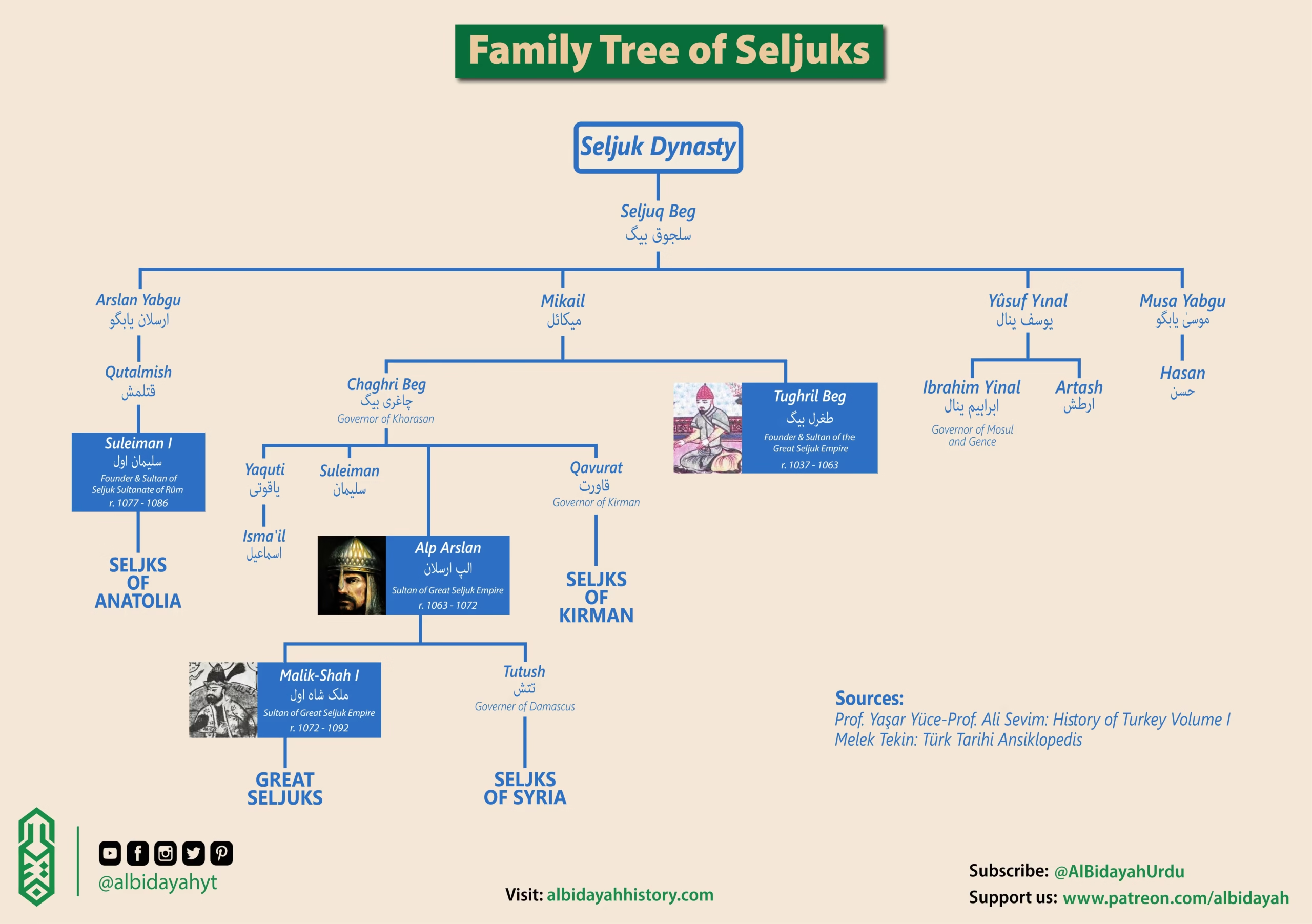
Seljuq Bey: The Founder of the Dynasty
The dynasty derives its name from Seljuq Bey, the founder who laid the foundation of the Seljuk family. He was originally a chief of the Oghuz Turks and converted to Islam, establishing the base for his descendants to become powerful rulers.
Mikail: The Father of Tughril Beg and Chaghri Beg
Michael or Mikail ibn Seljuq was killed in a battle while fighting against non-Muslims, Mikail’s legacy is notable through his sons—Tughril Beg and Chaghri Beg—who became the founders of the Great Seljuk Empire.
Arslan Yabgu: The Unfortunate Leader of the Seljuks
Arslan Yabgu or Arslan ibn Seljuq, a key early Seljuk leader, was instrumental in his tribe’s military successes, defeating the Karakhanids multiple times and supporting Ali Tigin during their civil war. However, in 1025, facing a coalition between Karakhanid Sultan Yusuf Kadir and Mahmud of Ghazni, Arslan relocated his tribe to the deserts.
He and his son Qutalmish were later captured by Mahmud—either during battle or through a betrayal at peace talks, as one account claims they were arrested during a dinner after negotiations. Imprisoned at Kalinjar Fort in present-day India, Arslan spent the rest of his life in prison. After Mahmud’s death, Arslan’s nephew Tughril Beg, and Mahmud’s successor Mas’ud I of Ghazni tried to reach an agreement. But the talks failed and Arslan died in prison in 1032.
Musa Yabgu
Musa Yabghu or Musa ibn Seljuk was one of the four sons of Seljuq Bey. His brother Arslan Yabghu wanted to lead the family when he was captured by the Ghaznavids, but was overshadowed by his nephews Tughril and Chaghri, who took charge of eastern affairs in the family council that met after the Battle of Dandanaqan. His son Hasan (Abu Ali Hassan) Bey was killed by the Georgians in an operation in eastern Anatolia in 1047.
During the reign of Sultan Tughrul, the areas ruled by Musa expanded and he obtained the titles of “Mu’izz al-Dawla Musa“ and Amir al-Mu’minin. But later, he rebelled during the time of Alp Arslan, but he was defeated and brought to him. Alp Arslan did not punish him. Details about the last years of his life are not known. But he died after 1064
Tughril Bey: The Founder of the Great Seljuk Empire
Tughril Bey or Tughrul was a visionary leader and the first ruler of the Great Seljuk Empire. He established the dynasty’s dominance by defeating the Ghaznavids and securing control over significant territories in Persia and Iraq. Tughril is particularly remembered for capturing Baghdad in 1055, marking the Seljuks as the protectors of the Abbasid Caliphate.
His reign solidified the Seljuk Empire’s role as a central force in the Islamic world. The Abbasid Caliph recognized Tughril as “King of the East and West” and gave him the title Rukn ad-Dīn (“Pillar of the Faith”) .

Chaghri Bey: The Strategist and Co-Ruler
Chaghri Bey or Çağrı Bey, Tughril Bey’s brother, was instrumental in the military and administrative successes of the early Seljuks. While Tughril focused on governance, Chaghri led military campaigns that expanded the empire’s territories. His contributions ensured the stability and growth of the dynasty.
See Also: Family Tree of Great Seljuk Empire
Qutalmish: The Aspirant and Ancestor of the Seljuks of Anatolia
Qutalmish, a cousin of Tughril and Chaghri Beg, had aspirations for the throne but eventually established his own lineage, which later founded the Seljuk Sultanate of Rum (Anatolia). His son, Suleiman I, became a key figure in the Seljuk expansion into Anatolia.
Ibrahim Yinal: A Key Seljuk Commander
Ibrahim Yinal, a Turkish bey from the Seljuk family, was both a cousin and maternal brother to Tughril Bey and Chaghri Bey, the founders of the Seljuk Empire. Known as Seyfuddevle, he played a pivotal role in the empire’s expansion, capturing key cities like Nishapur, Rey, and Hamedan, and leading raids along the Tigris River, contributing significantly to the Turkification of Anatolia.
After the Battle of Dandanaqan (1040), Ibrahim was assigned to the western frontier, where he avenged his cousin Hasan Bey’s death by defeating the Byzantine-Georgian forces at the Battle of Pasinler (1048). This victory secured the Seljuk western borders and brought substantial spoils and captives.
However, Ibrahim’s growing autonomy led to conflict with Sultan Tughril . In 1058, he rebelled but was defeated and executed by Sultan Tughril. Despite his rebellion, Ibrahim Yinal’s military achievements were crucial to the Seljuk Empire’s early success.
Suleiman I: Founder of the Seljuks of Anatolia
Suleiman I, the son of Qutalmish, is credited with founding the Seljuk Sultanate of Rum in 1077. This Anatolian branch of the dynasty played a crucial role in the region’s history, particularly during the Crusades. Suleiman’s leadership marked the beginning of Seljuk influence in modern-day Turkey.
Alp Arslan: The Conqueror of Manzikert
Alp Arslan, the son of Chaghri Beg, is one of the most celebrated rulers of the Seljuk Dynasty. His reign is marked by the famous Battle of Manzikert (1071), where he decisively defeated the Byzantine Empire. This victory opened the gates of Anatolia to Turkish settlement and significantly weakened Byzantine power. Alp Arslan is remembered for his strategic brilliance and his efforts to unite the Islamic world under Seljuk rule.
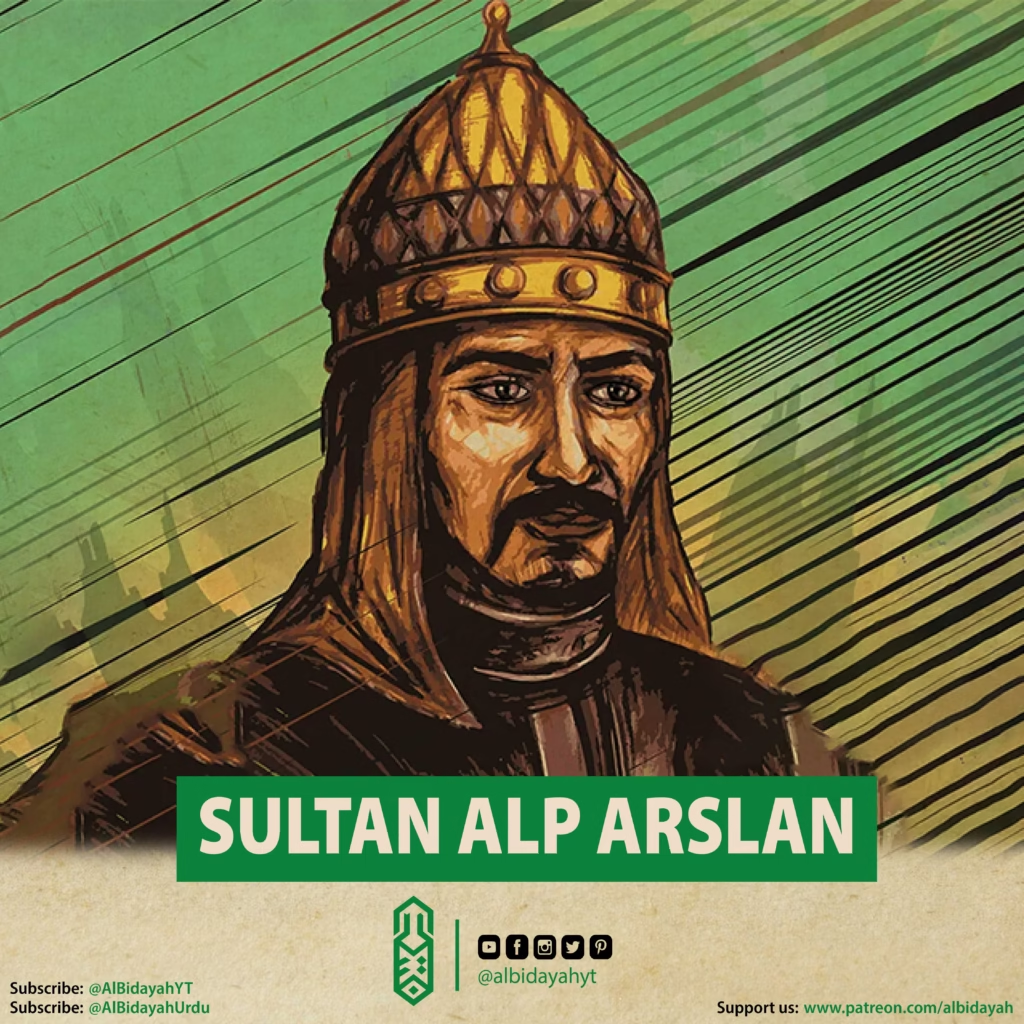
Kara Arslan Ahmad Qavurt: A Seljuk Prince and Rebel
Qavurt (also spelled Kavurt), a Seljuk prince and son of Chaghri, was governor of Kirman and brother to Alp Arslan. After Alp Arslan’s death in 1072, the throne passed to his son, Malik-Shah I, per his will. However, Qavurt rebelled, aiming to claim the throne.
Despite commanding a smaller force, Qavurt’s rebellion gained support from Turkmen officers, prompting Malik Shah and his vizier, Nizam al-Mulk, to bolster the army with non-Turkic regiments and Artukid allies. The decisive battle at Kerç Kapı (1073) ended in Qavurt’s defeat and capture. Though Malik Shah initially sought mercy, Nizam al-Mulk persuaded him to execute Qavurt and two of his sons, along with purging Turkic commanders linked to the rebellion.
While Qavurt’s defeat weakened Turkic influence in the Seljuk Empire, his remaining sons ruled Kirman as vassals, extending their lineage beyond the Great Seljuk Empire.
Malik-Shah I: The Golden Age of the Seljuks
The son of Alp Arslan, Malik-Shah I, presided over the empire’s golden age. His reign saw remarkable administrative reforms and cultural advancements, thanks to his vizier Nizam al-Mulk, who established the famous Nizamiyya madrasas. Malik-Shah expanded the empire to its greatest territorial extent, spanning from Central Asia to the Mediterranean.
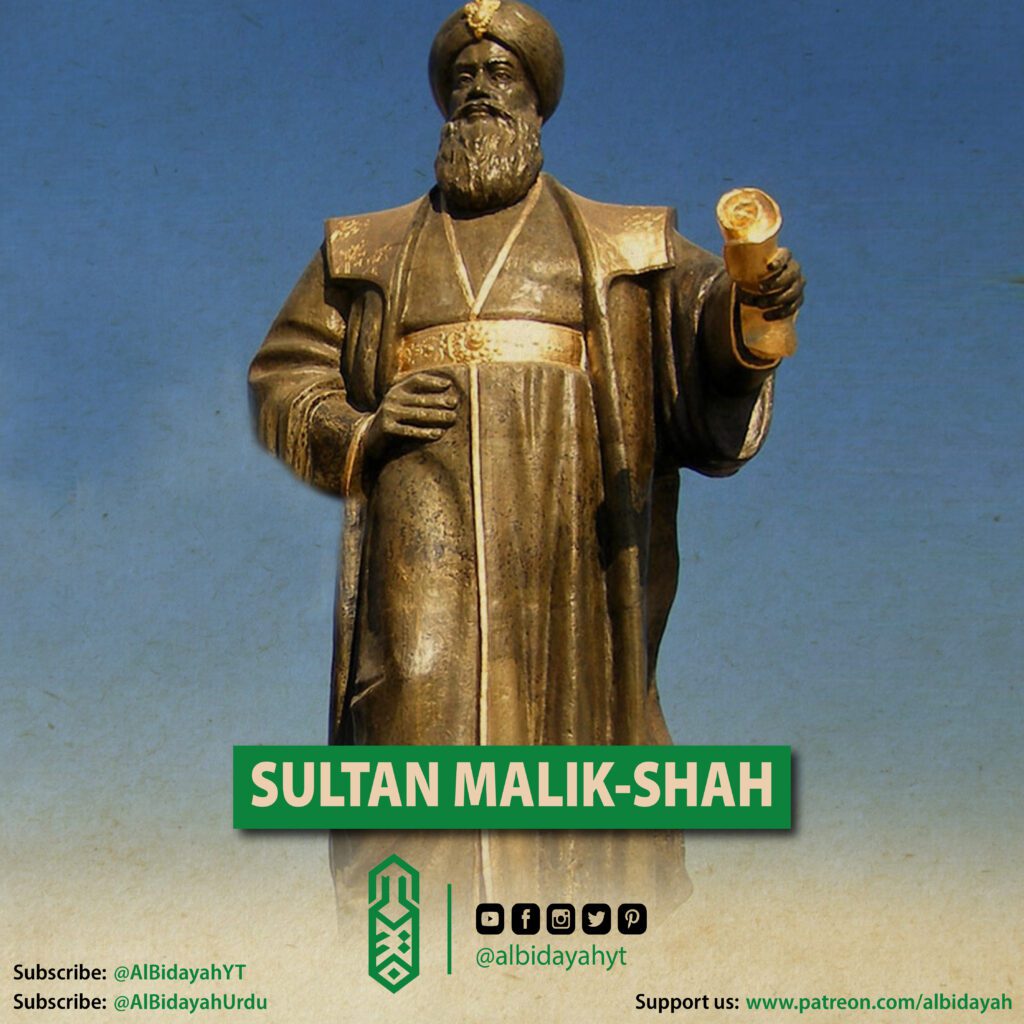
Tutush: The Founder of the Seljuks of Syria
Tutush I, the brother of Malik-Shah, established the Seljuk rule in Syria. As the governor of Damascus, he laid the foundation for the Seljuk influence in the Levant, which later played a significant role in resisting the Crusaders.
Yusuf Yinal, Artash, and Hasan: The Lesser-Known Figures
The figures, like Yusuf Yinal, Artash, and Hasan ibn Musa Yabgu, descendants of Seljuq Beg’s extended family, played varying roles in the Seljuk dynasty’s history. While their contributions are less prominent, they represent the widespread influence of the Seljuk family across different regions.
See Also: Khalji Dynasty Family Tree – Delhi Sultanate
Legacy of the Seljuks
The Seljuks not only reshaped the political map of the Islamic world but also fostered a cultural and intellectual renaissance. The establishment of madrasas, patronage of scholars, and development of architecture under Seljuk rule had a lasting impact on Islamic civilization.
The family tree of the Seljuks highlights the interconnectedness of its branches, from the Great Seljuk Empire to the regional dynasties of Anatolia, Syria, and Kirman. Each member of the dynasty contributed to the empire’s legacy in their unique way, making the Seljuks a defining force in medieval history.
